A petrol-electric plug-in hybrid predator has entered the diesel-infested waters of the dual-cab ute segment, and current market form suggests the BYD Shark 6 won’t find itself out of its sales depth.
The Shark 6, to give the model its full name, is without doubt the Build Your Dreams company’s boldest play yet in Australia, following a variety of passenger cars and SUVs.
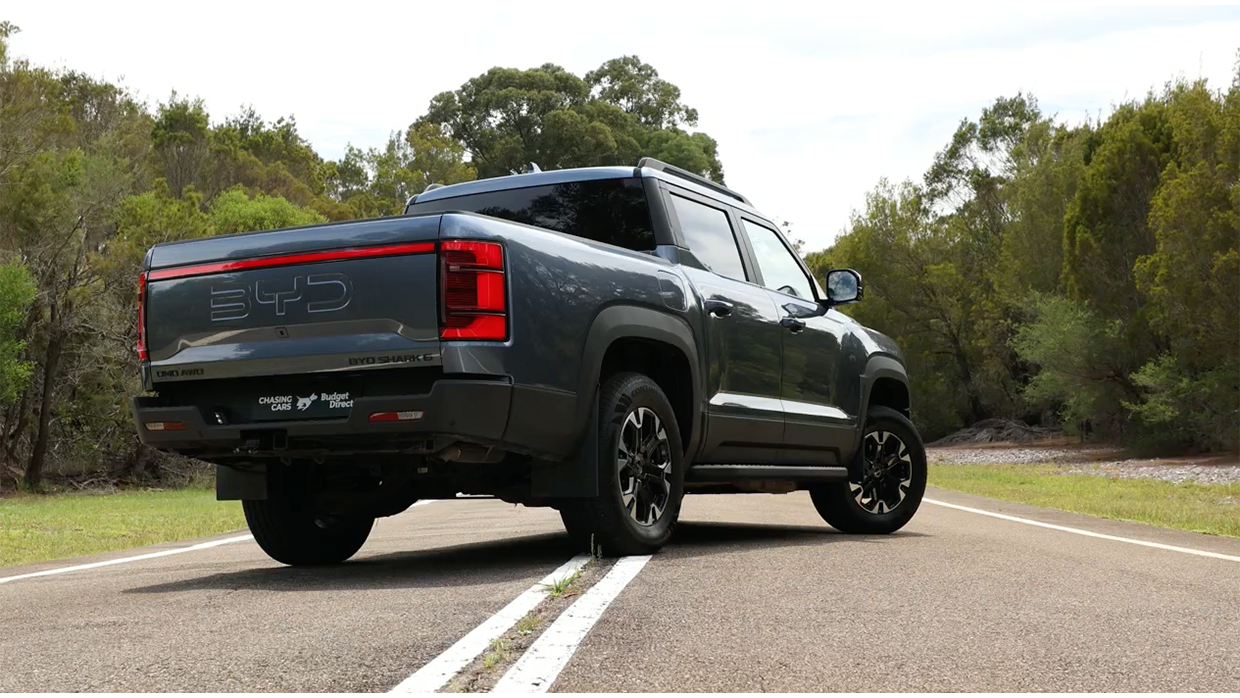
Several headline figures begin with the pricing, which is from $57,900 – or about $61,000 drive-away.
That’s less than you’ll be charged by Ford or Toyota, respectively, for an XLS Ranger or HiLux SR5 – variants of the hugely popular utes that give you significantly fewer features than the Shark 6.
Then factor in power/torque outputs – 321kW and 650Nm – that are higher than that of the performance-focused Ranger Raptor.
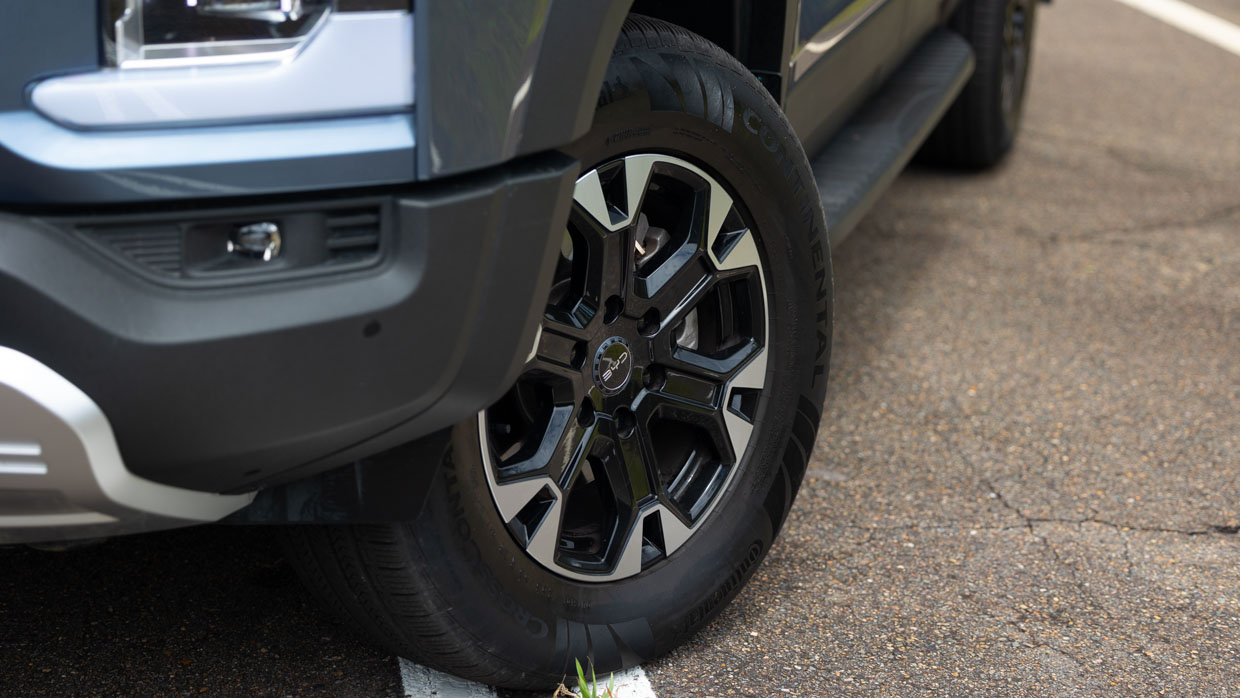
Those are combined figures from the Shark’s combination of front and rear electric motors plus a 1.5-litre turbocharged four-cylinder engine.
Those electric motors are fed by a 29.6kWh battery that’s integrated into the middle of a ladderframe chassis, and while the Shark mirrors most rivals with an independent (double-wishbone) front suspension, the rear suspension eschews segment convention by also being independent with double A-arms again.
While it’s not the first electrified ute in Australia, the segment’s first plug-in variety does promise to be a vastly better (and vastly cheaper) option than the heavily flawed fully electric LDV eT60 while also offering significantly better fuel efficiency than GWM’s petrol-electric Cannon Alpha Hybrid.
What are the Shark 6’s features and options for the price?
There’s just one specification, formally called the Premium, available for the $57,990 RRP, which may end up being an introductory offer that doesn’t last throughout 2025.
Three colours are offered, each riffing on the Shark’s nameplate: Great White, Tidal Black, and (as per our test car) Deep Sea Blue. It’s an extra $700 charge for all but the standard white.
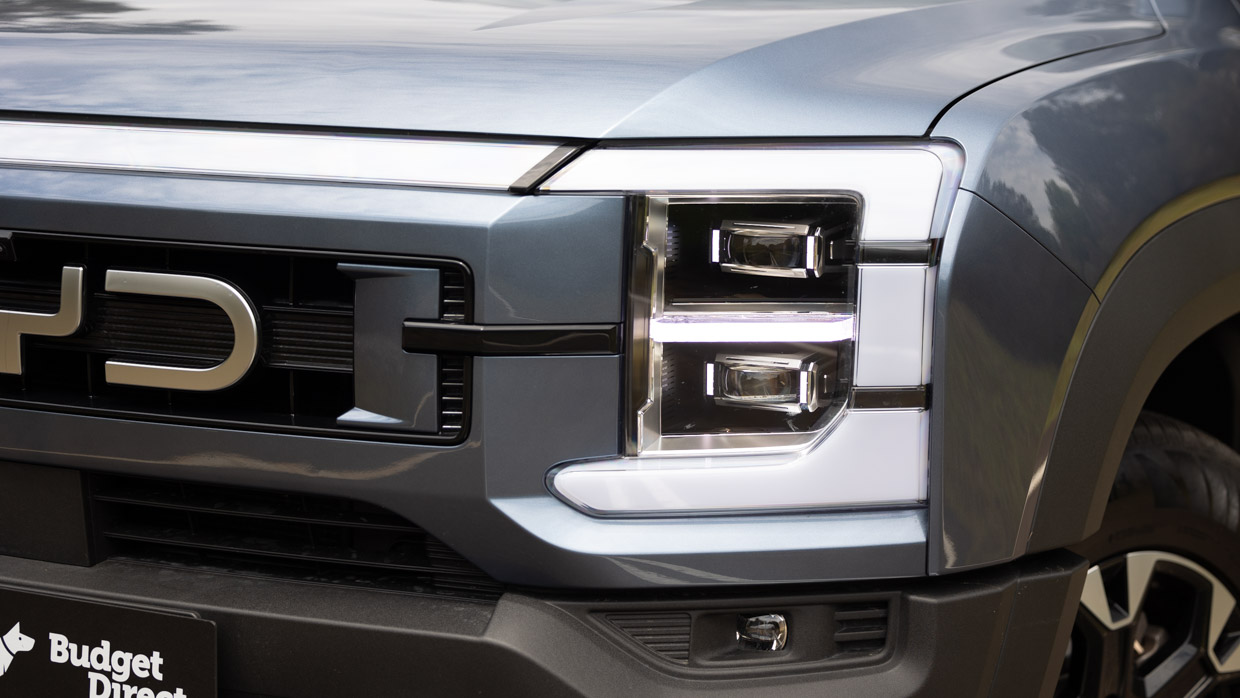
Various accessories can also be added and include wheels, all-terrain tyres, bull bars, sports bars, roof racks, and cargo covers.
Key standard features are otherwise:
- 18-inch alloy wheels
- LED headlights, DRLs and tail-lights
- Side steps
- Electric front seats with heating and ventilation
- Front/rear sensors plus surround view
- Artificial leather seats
- Leather steering wheel
- Dynaudio audio system
- Head-up display
- 15.6-inch infotainment display with rotation
- 10.25-inch digital driver display
- Wireless phone charging (with ventilation)
- Wireless smartphone mirroring
Is the Shark’s tub practical and how much can BYD’s hybrid ute tow?
With a 1.5-metre length and 1.2 metres between the wheel housings, the Shark’s tray is neither the longest nor widest in the segment, yet that width makes it one of the few to be able to accommodate the squarer Aussie-style pallet as well as the rectangular Euro-size pallet.
The usefully wide (1370mm) tailgate is also not only hydraulically damped but offers multiple ways to open it: via a button on the tailgate, via the keyfob, by a button on the infotainment touchscreen, or a dedicated switch on the centre console.
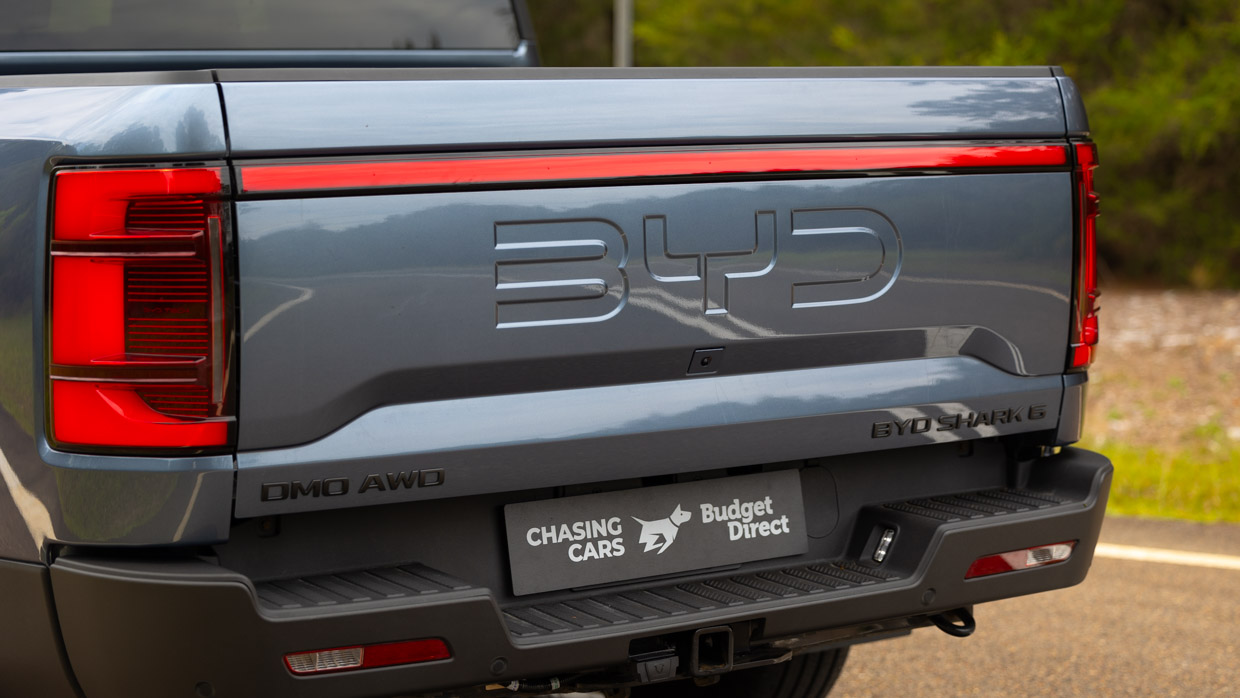
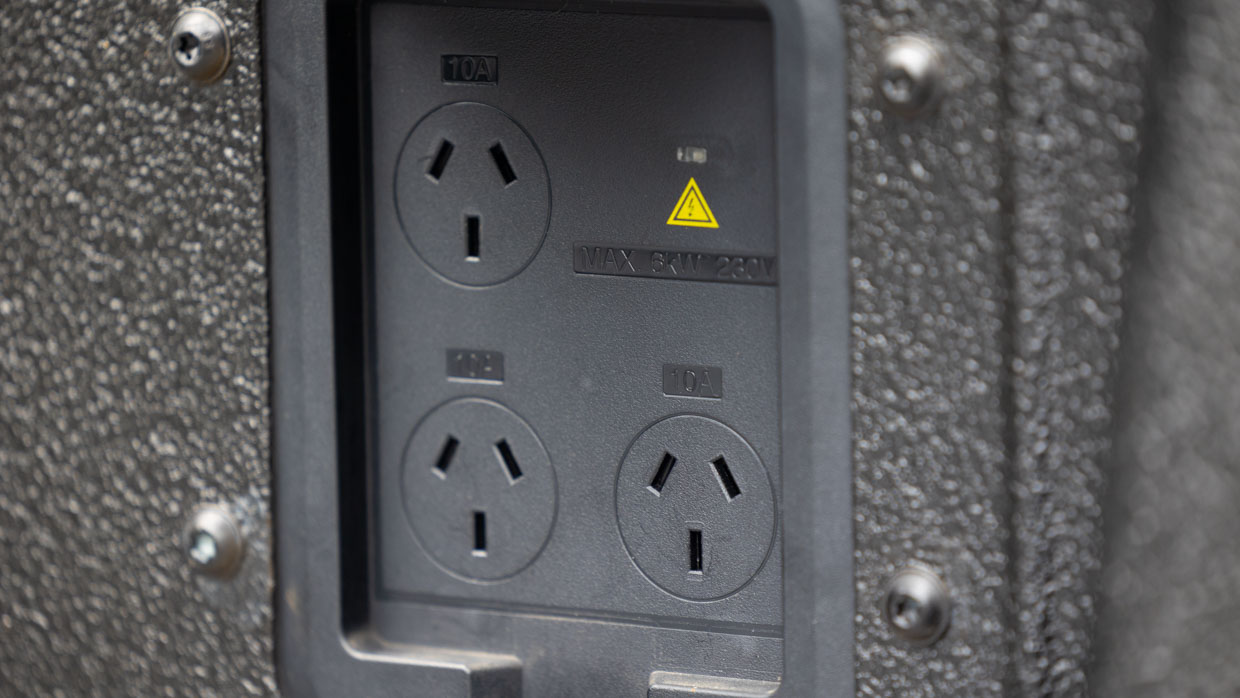
There’s a spray-in bedliner, dual lights, six tie-down points, though the tub’s practicality party piece is a trio of 230-volt sockets that allow for the plugging in of power tools, cooking utensils, even a portable television if you like.
While BYD quotes a tray capacity of 1200 litres, the Shark’s payload is one of the lowest in the dual-cab category at just 790kg – slightly better than some versions of the LDV T60 but otherwise well down on most rivals that typically offer more than 900kg and some more than a tonne.
Potential Shark buyers also need to consider its braked towing capacity, which at 2500kg is a full tonne down on the 3500kg offered by most vehicles in the class now.
What is the Shark 6’s interior and tech like?
BYD’s theatrical rotating infotainment touchscreen also appears in the Shark – with a generous 15.6-inch diameter – though the ute avoids the company’s idiosyncratic cabin designs found in most of its models to settle for something closer to segment norms. A smart move, we’d suggest.
Rugged cues are found in features such as the fixed handgrips on the A-pillars, centre console, and B-pillars, while there’s a chunky gearlever and oversized switchgear.
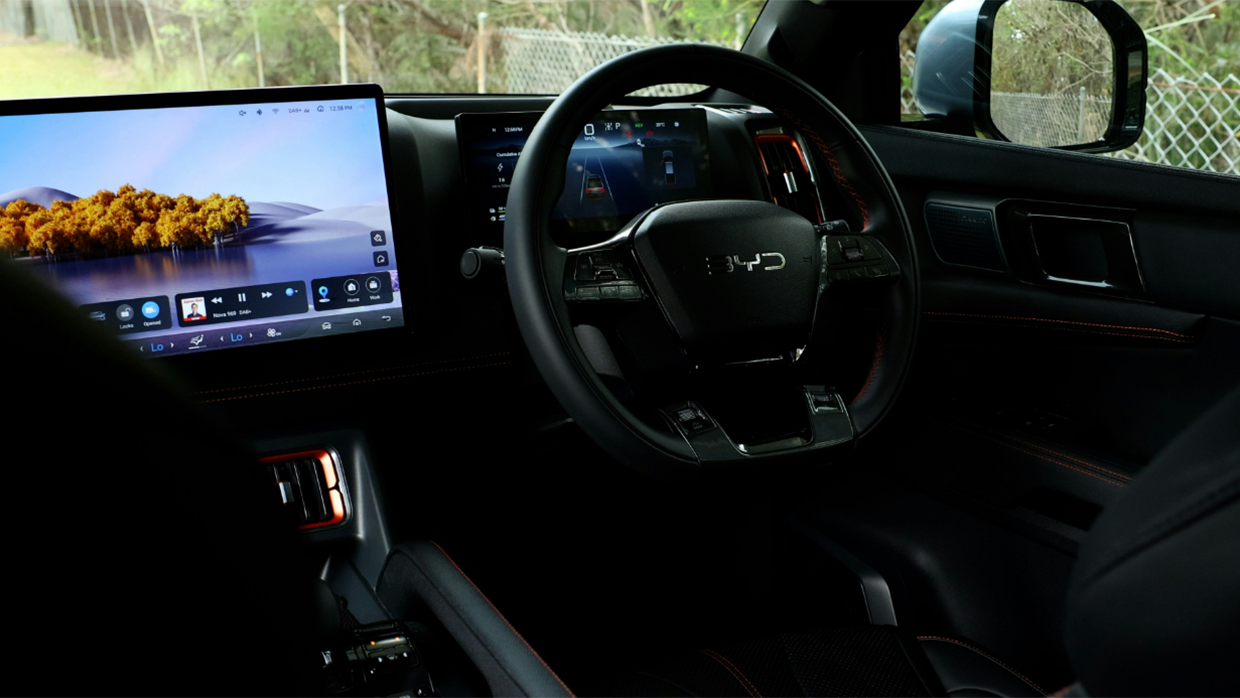

A leaf is taken out of the Raptor styling book with orange highlights used for vent surrounds, stitching, front cupholders, and the engine start/stop button. The rest is all black with no other interior colour options.
The steering wheel is the only place you’ll find genuine leather, though pleather is applied generously to ensure most surfaces are soft. It creates a well-judged balance between upmarketness and functionality.
Good storage options include well-sized door pockets, a deep front-passenger dash shelf, a useful console cubby, and dual smartphone trays – with the right-sided tray featuring fan-cooled 50-watt charging.
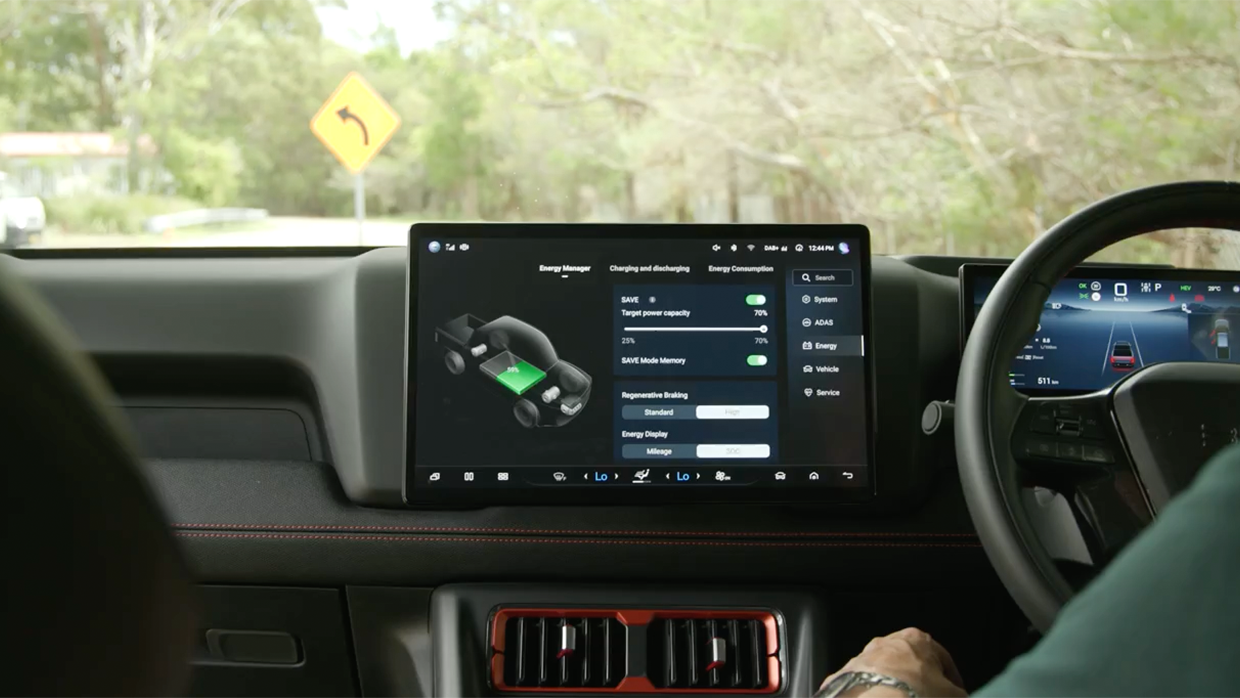
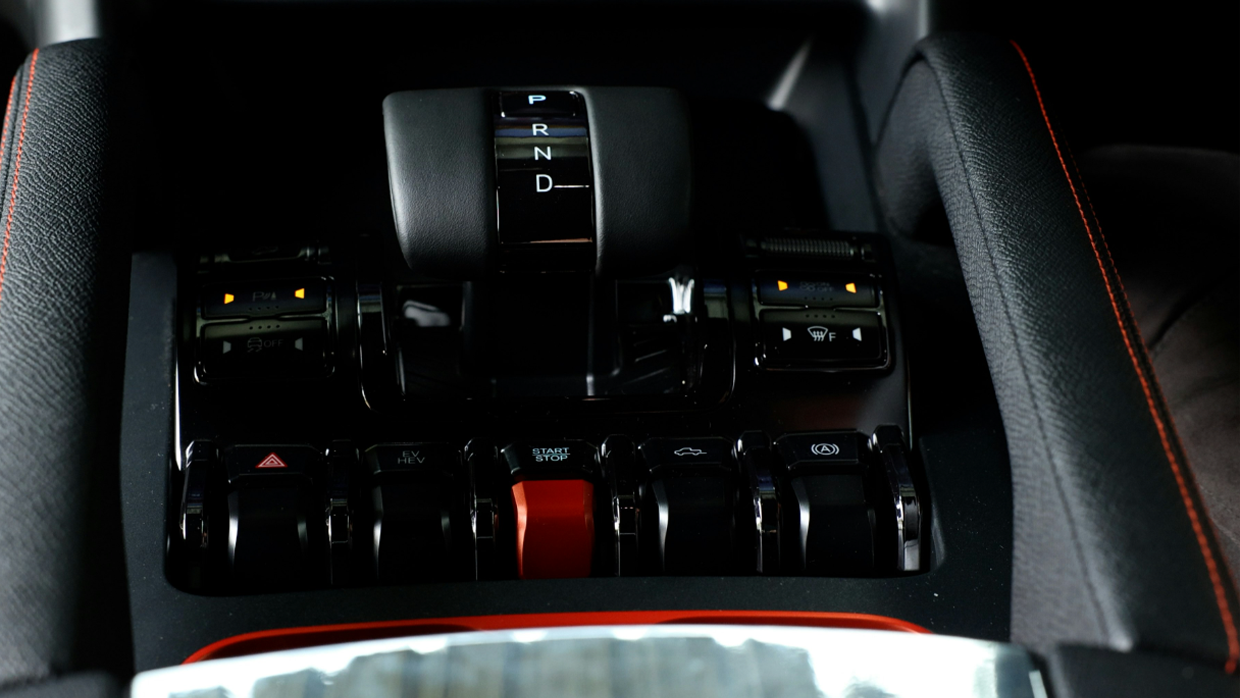
The Tesla-like infotainment display provides plenty of short-cut touch buttons along the bottom, though similarly frustrates by forcing the driver into sub menus to locate adjustments to the driving experience – such as altering the regenerative braking level.
Unlike a Tesla Model 3 or Model Y, though, BYD provides both a digital cluster and a head-up display for essential driver information.
Behind the front seats is one of the most spacious rear accommodations you’ll find in the segment. Headroom and knee space is in abundance, while the flat floor and decent cabin width mean three adults could fit across when needed.

Practically, there’s another 230-volt socket (to complement the three in the tray) along with USB-A and USB-C ports, an armrest with cupholders, and vents. Handgrips on the B-pillars – shaped unusually like a lower-case t – are also useful if you’re riding in the back when the Shark is tackling some tricky terrain.
How does the Shark 6 drive?
Unlike your traditional diesel-powered dual-cab. If the battery charge is above 25 per cent, the Shark will typically use only its two electric motors to drive the wheels.
Electric-only driving can be requested by holding down the EV/HEV (Electric Vehicle/Hybrid Electric Vehicle) button on the centre console for a few seconds, creating what’s billed as Max EV mode. (You know it’s engaged when the green ‘EV’ light on the driver display turns blue.)
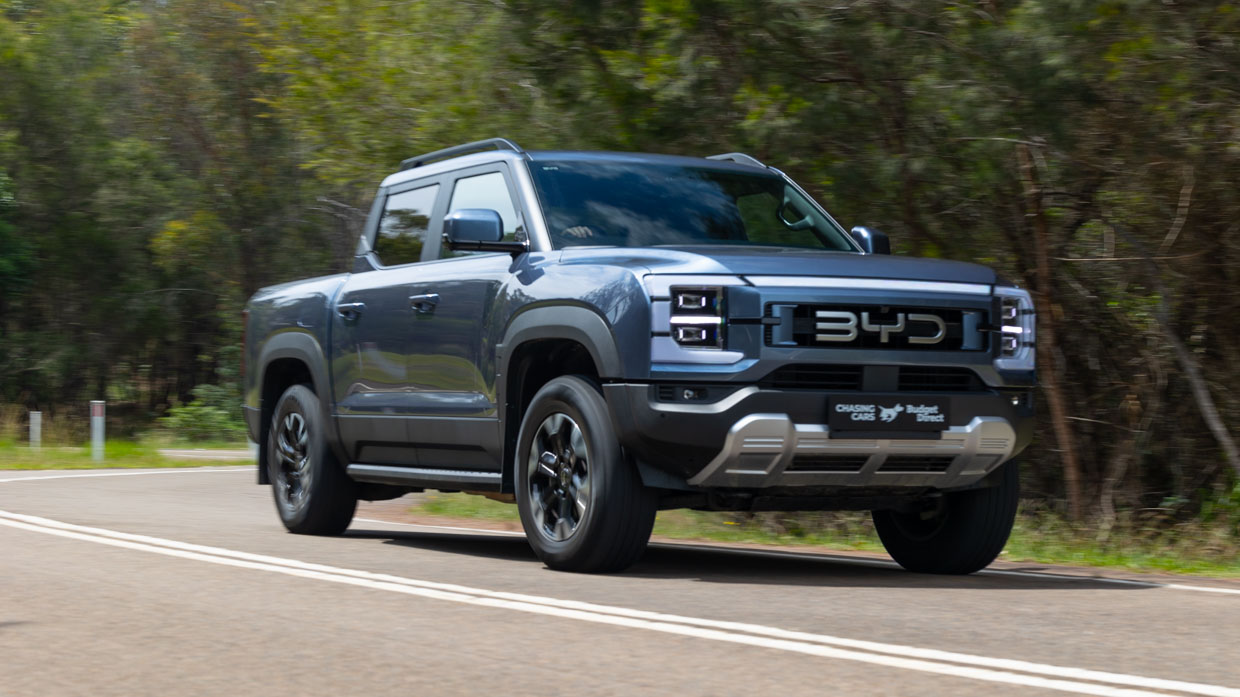
The Shark otherwise switches automatically between EV and HEV depending on throttle demands or battery level.
As with most PHEVs, there’s an option to preserve the battery for where it’s wanted by choosing the battery percentage (state of charge) – between 25 and 70 percent – where the petrol engine is encouraged to be more involved. The absence of diesel clatter is a slightly surreal experience, and the near-silence isn’t interrupted by noisy tyres, either.
The petrol engine is also relatively quiet when running either in its role as generator or joining the front electric motor in powering the front wheels. The immediacy of the drivetrain’s response is also uncanny, making the Shark 6 an utterly effortless vehicle to drive despite a 2.7-tonne kerb weight.
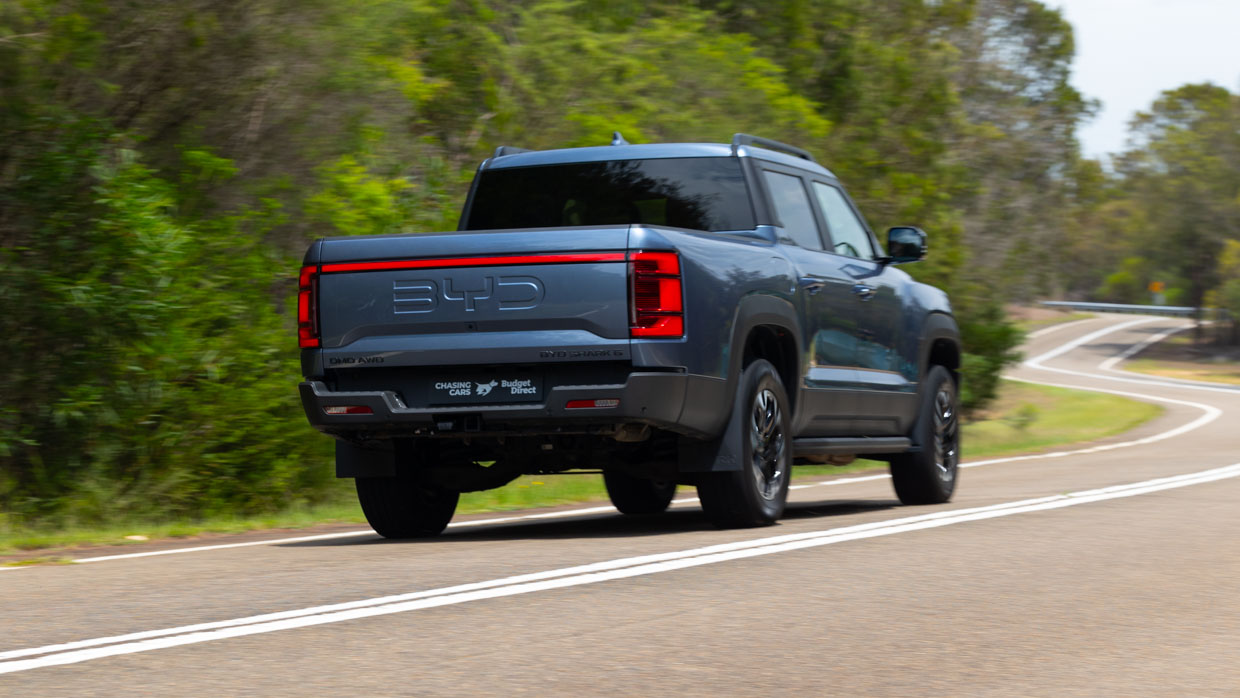
Selecting Sport mode – via a scroll button on the lower-left side of the steering wheel – makes the BYD ute feel even more rapid.
We could easily believe the claimed 0-100km/h acceleration time of 5.7 seconds, though we conducted our own testing all the same – and achieved the run in 5.6 seconds. That confirms the Shark accelerates faster than Ford’s twin-turbo V6 petrol Ranger Raptor.
The middle (and default) Normal mode was our preference for everyday driving, though there is an Eco option to instruct the Shark to be as efficient as possible. Two levels of regen braking are available, selected via a menu in the touchscreen.
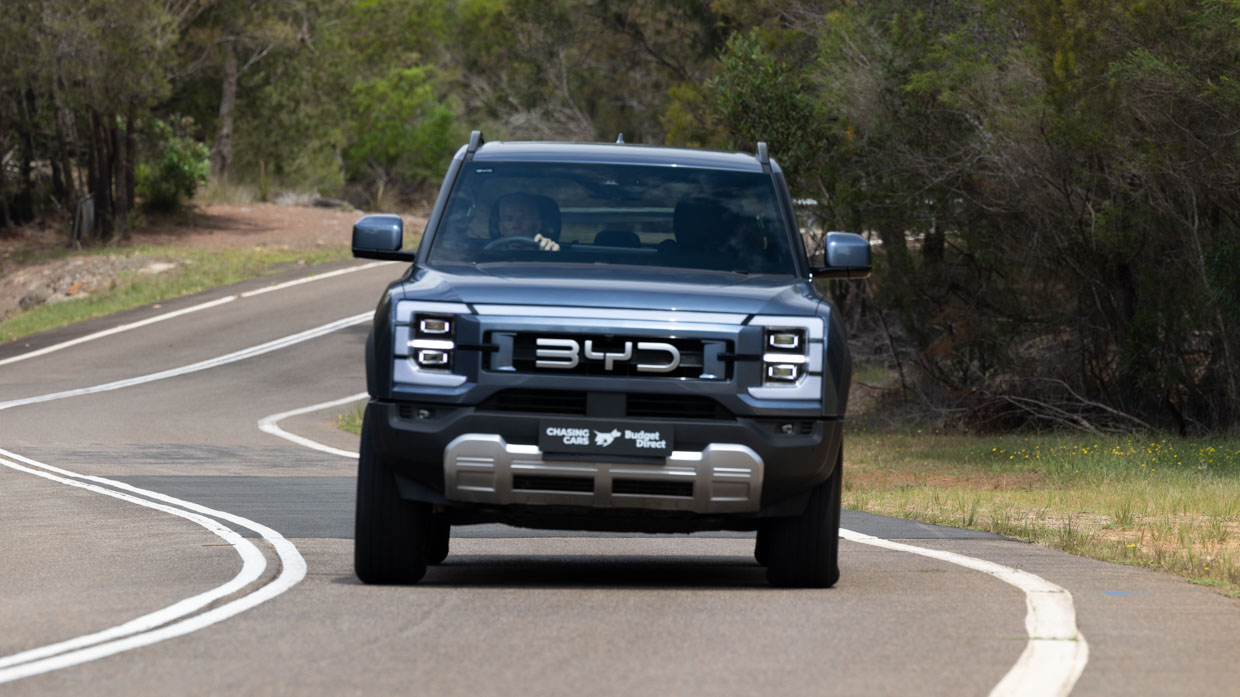
There are no body-on-frame miracles in the sense that the Shark will shudder when striking bigger bumps or potholes, and the independent rear suspension doesn’t help eliminate lumpiness or jiggliness from the ride.
The Shark is at its smoothest on freeways – at least where the surface quality is of a decent standard. Here, the combination of the suspension’s suppleness and the driver seat’s comfort is great for longer trips.
An extra bonus for peaceful motoring is non-intrusive driver aids; the driver attention monitor (with a camera affixed to the windscreen pillar) would occasionally flash up a message on the digital driver display though it resists the urge to beep.
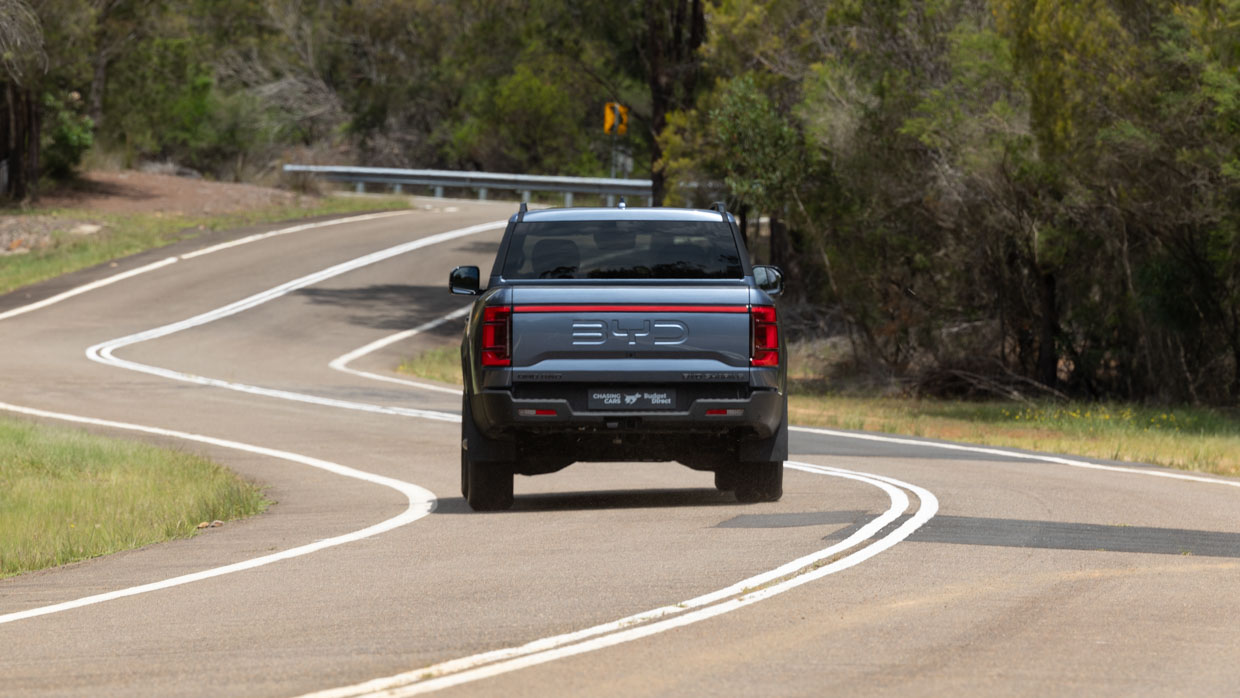
It can also be turned off via the touchscreen – and, better yet, it remained off even when the vehicle was switched off and restarted later. Please note Kia and Hyundai!
A plug-in ute surely saves significant fuel?
Absolutely, though just how much depends on how regularly owners charge their Shark to take advantage of its electric-only capability.
Two official consumption figures are provided: 7.9 litres per 100km when the battery is at or below 25 per cent (where the turbo petrol replenishes the battery or helps power the front wheels); 2.0L/100km if battery power is above 25 per cent. Real-world fuel consumption will depend on owner driving behaviour and recharging frequency.

There are some insights from our three days with the Shark. Firstly, we managed about 80km of electric range from a full battery – a good result even against the vehicle’s official 100km claim as that’s based on the always-optimistic NEDC cycle.
Secondly, we recorded real-world consumption after two days that included recharging the battery to full again before refilling the 60-litre fuel tank. With a figure of 6.8L/100km after nearly 300km of driving, that would give the Shark a theoretical range of 876km.
The trip computer’s readouts, which don’t offer as much clarity as they should, suggest consumption between 8.0L and 8.80L per 100km is likely when on longer drives without charging, bringing a range more similar to the twin-turbo V6 petrol Raptor (696km).
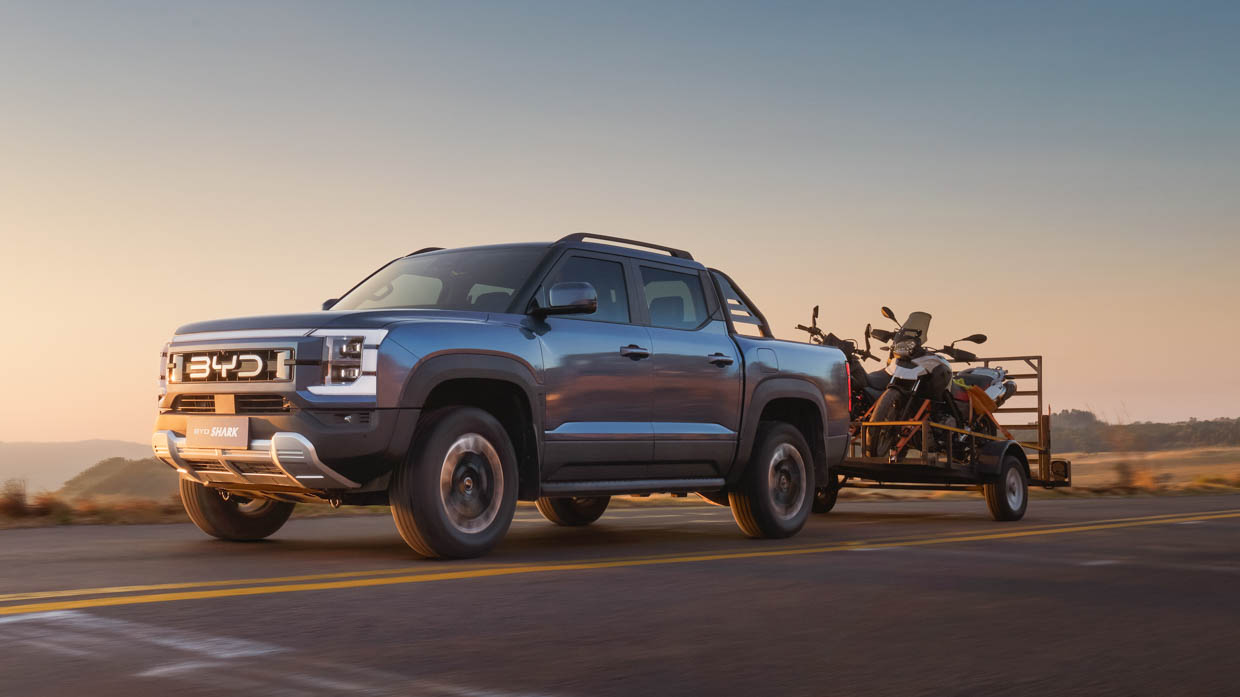
To compare diesel Ranger models (which also feature 80L tanks), a four-cylinder turbo diesel XLS has a theoretical range of 1111km, and an XLT V6 diesel 952km.
It’s also returning to the GWM Cannon Alpha ute here, which is offered with a non-plug-in hybrid drivetrain which has relatively disappointing official consumption of 9.8L/100km.
Recharging the Shark’s 29.58kWh battery isn’t a quick process, limited to 7kW with AC power or up to 55kW with DC power.
Is the Shark 6 capable off-road?
The BYD Shark essentially relies on its ground clearance (and underbody protection) plus clever traction control and variable, electronically controlled torque distribution between the front and rear electric motors.
There are a few terrain modes available to the driver (via another steering wheel scroll-button). There’s no transfer case or low-range gearing.
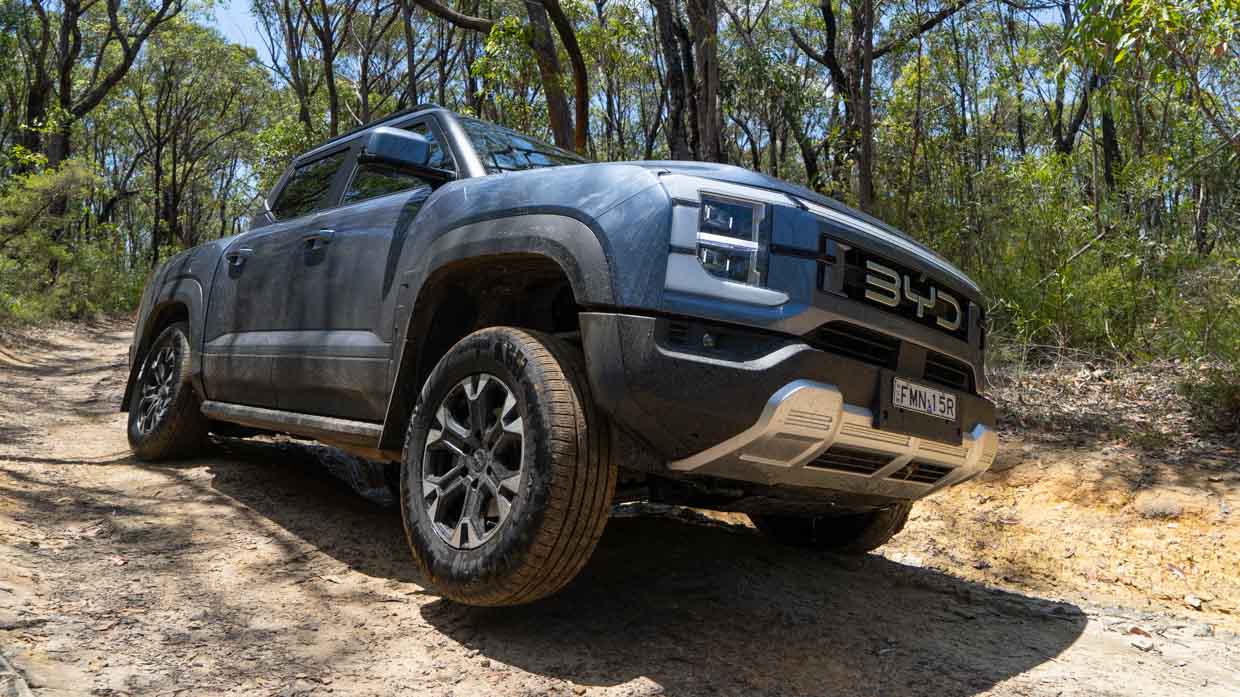
For a more in-depth review of the Shark’s off-roading ability, read our dedicated review here.
Is the Shark 6 a safe car?
The Shark 6 has not yet been tested by ANCAP, though a result is expected soon. BYD has a perfect record of five-star ratings so far with Australian-market vehicles.
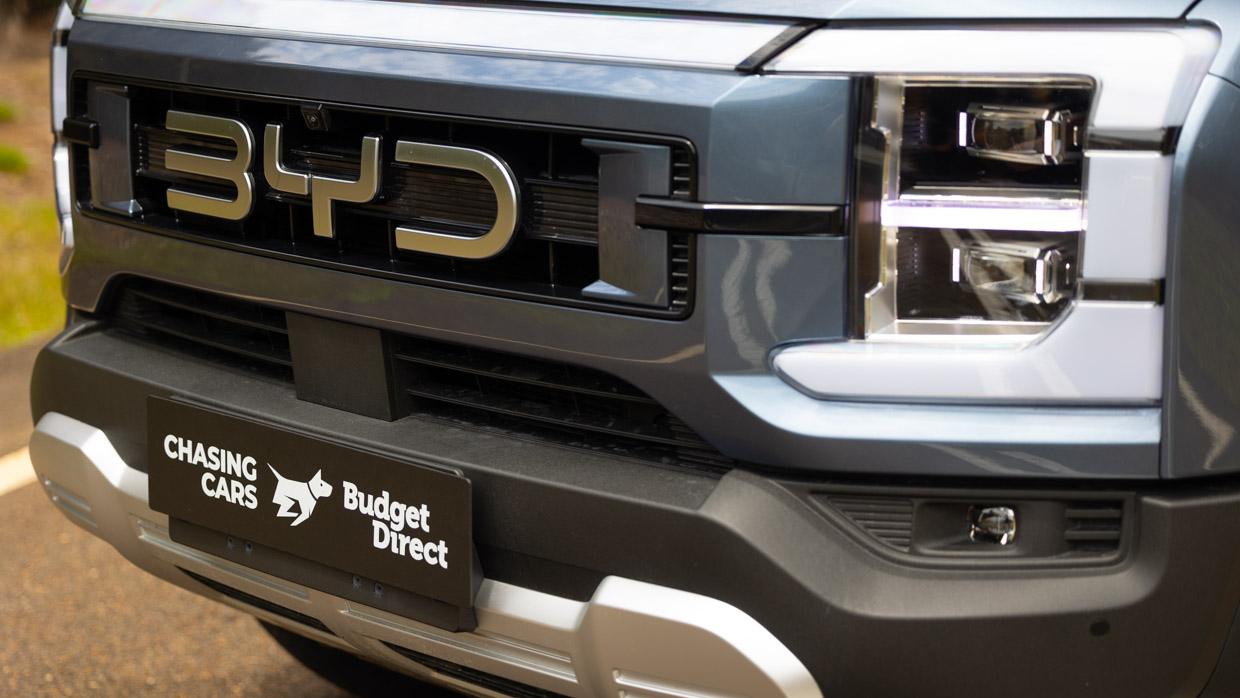
There’s active safety systems galore, the highlights of which are listed below along with passive safety features:
- Front, side, side curtain, and far side drive airbags
- 360-degree camera
- Autonomous emergency braking
- Hill descent control
- Intelligent and adaptive cruise control
- Lane departure warning and prevention
- Emergency lane keeping assist
- Front collision warning
- Rear collision warning
- Traffic sign recognition
- Front cross traffic alert and brake
- Rear cross traffic alert and brake
- Blind spot detection
- Trailer stability control
- Child presence detection
- Head-up display
What are the Shark 6’s ownership costs?
There’s an initial free service inspection at 3500km or six months, before intervals become set at 20,000km or 12 months.
Costs for visits range from $351 to a hefty $1423 depending on the mileage or the vehicle age.
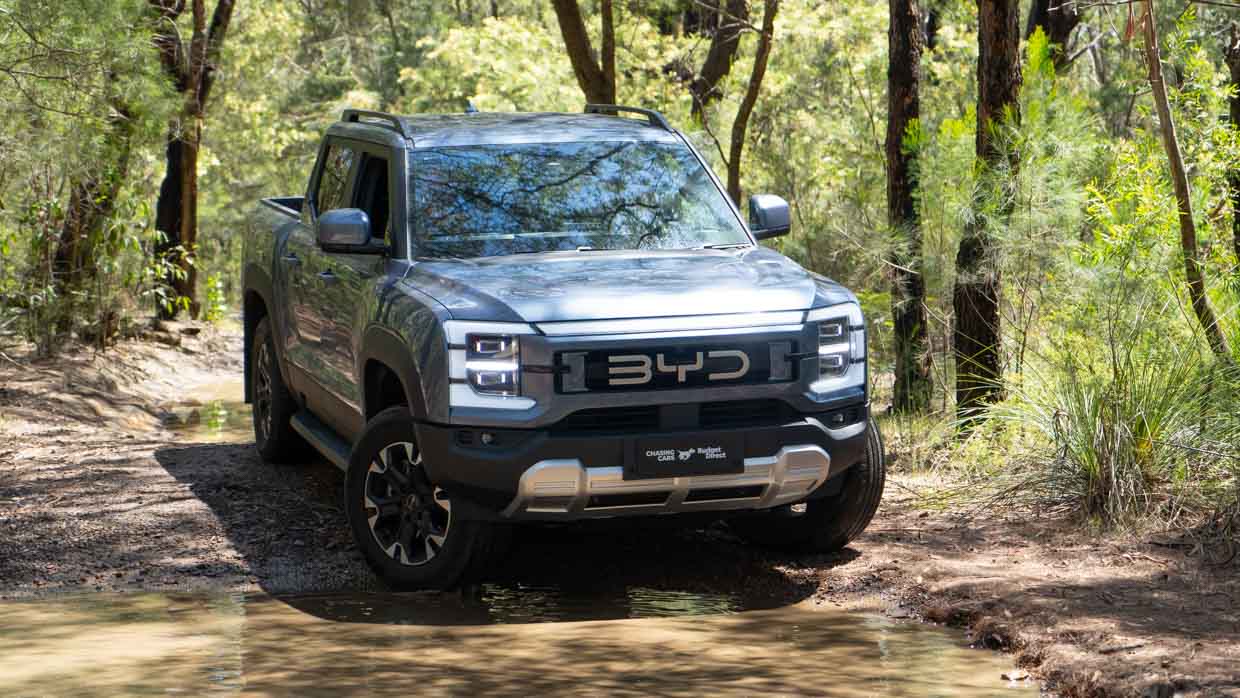
Vehicle warranty is six years or 150,000km, with the Shark’s battery covered for eight years or 160,000km.
The honest verdict on the Shark 6
The BYD Shark reinvigorates a dual-cab segment that’s been resting largely on its laurels when it comes to efficient drivetrains. Its plug-in hybrid set-up is capable of rapid performance, impressive fuel economy, and – crucially for long touring – running forever provided you have access to fuel.
Yes, its braked towing capacity and payload figures trail the majority of other category contenders but the Shark’s independent rear suspension is an honest declaration that this is a ute geared more towards lifestyle usage than commercial activities.
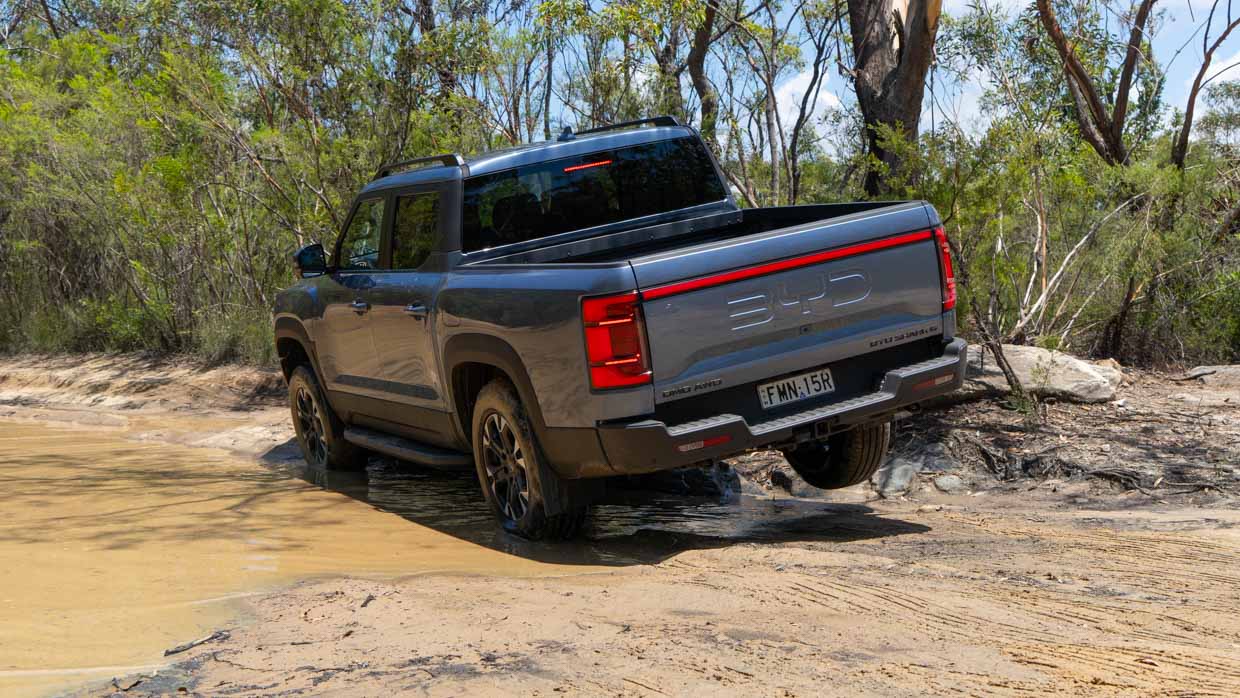
Many Australians will also find 2.5 tonnes towing more than sufficient, as they will find its off-road abilities amply capable for all but the most hardcore obstacles that require greater wheel articulation.
And if the Shark 6’s pricing can remain in its current ballpark, the value proposition is staggeringly good.
If you want concrete proof that an electrified ute won’t kill the weekend, here it is.









